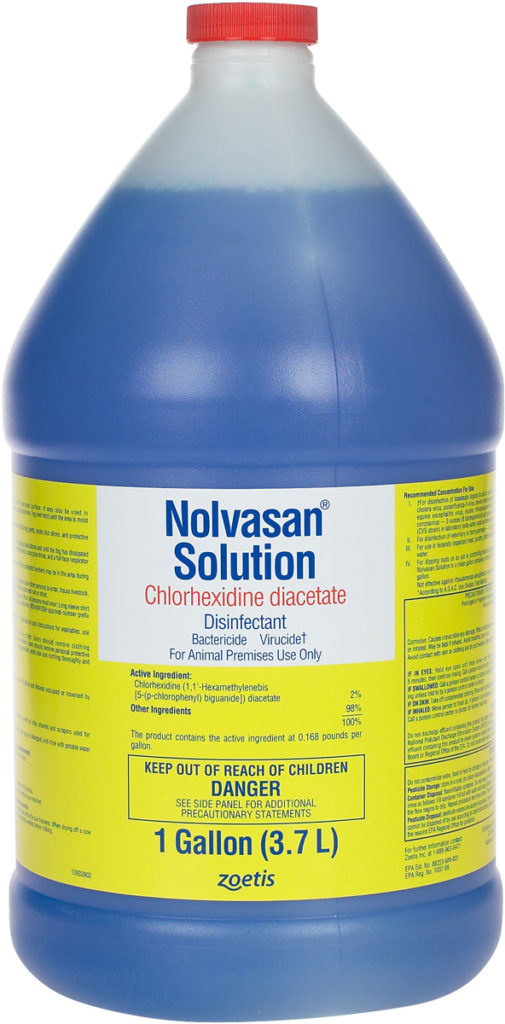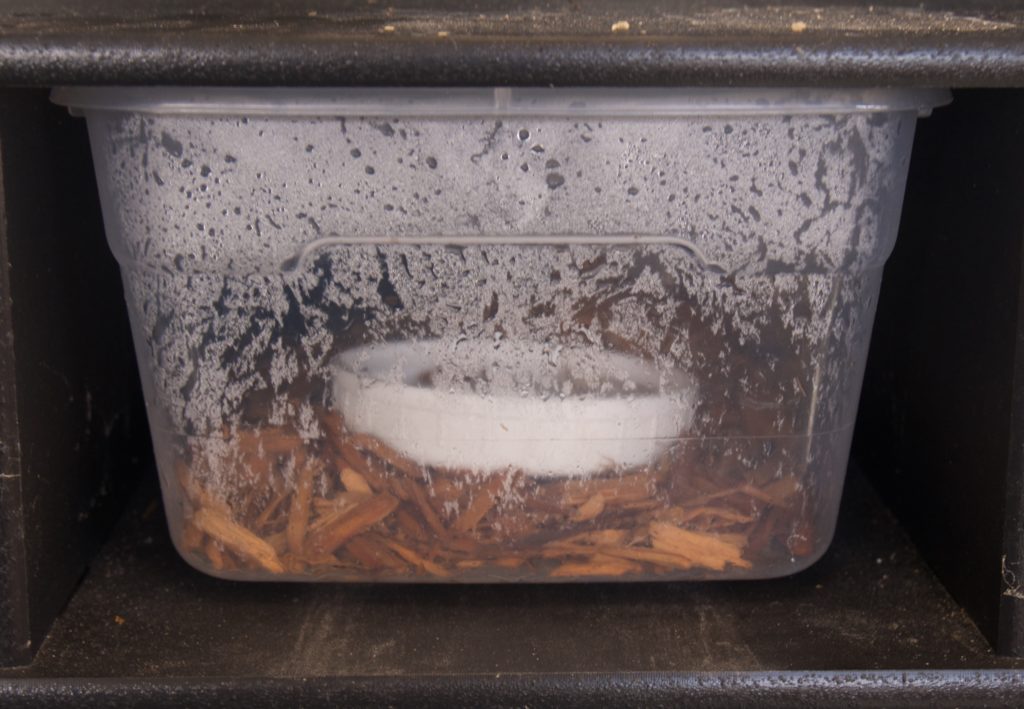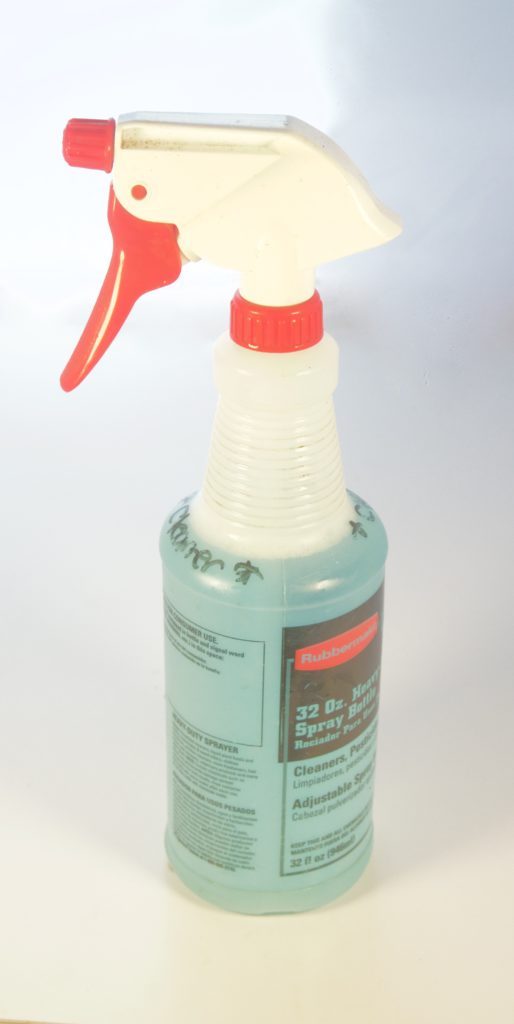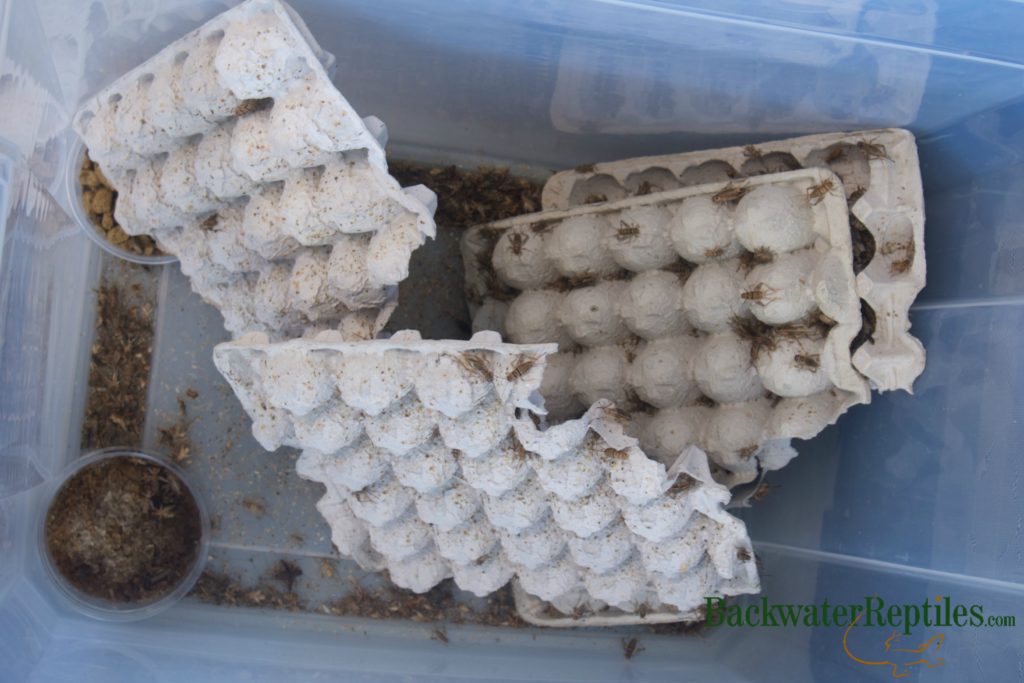We all love our pets, but it’s true no matter if you own a puppy or a python that part of the responsibility of pet ownership is cleaning up after it, no matter how unglamorous it may be. The question of how to clean a reptile’s cage is common, and easily answered.
Because reptiles and amphibians live in cages unlike our other furry companions, cleaning up after them is a bit different than scooping the dog poop in the backyard or sifting through the litterbox. However, it’s not a hard task once you’ve done it once or twice.
Many people aren’t experienced with the proper and safe methods to cleaning a reptile or amphibian’s enclosure. That’s why we’ve written this blog article dedicated to explaining how we clean our animals’ cages and passing along this valuable information to you.

How To Clean A Reptile’s Cage
What Cleaning Solution Should I Use to Clean My Reptile’s Cage?
Aside from unscented antibacterial soap and water, we highly recommend using a veterinary disinfectant solution called Nolvasan for all your reptiles, amphibians, and exotics.
Nolvasan is a solution that is commonly used at veterinary facilities because it safely kills many types of viruses, bacteria, and species of fungus that commonly afflict animals and people. What’s more, it’s safe to use around animals, although we do always remove our animals from the tank when using Nolvasan.
You can purchase Nolvasan online through retailers such as Amazon in a variety of different sizes and concentrations. As long as the solution is blue and the active ingredient is chlorhexidine diacetate, you can buy whatever quantity works for your purposes.

Because we have such a large volume of cages to keep clean at Backwater Reptiles, we usually purchase a gallon at a time and dilute it with water according to the instructions on the bottle. Then we use the diluted solution in a spray bottle to wipe down cages and flat surfaces.
We’d like to say that although we’re not endorsing Nolvasan, it is the safest product we have found for both human beings and the animals. It leaves no strong ammonia after-smell and is a far safer alternative to water and bleach solutions, which we definitely don’t recommend using.
What Supplies Will I Need to Properly Clean My Reptile’s Cage?
Different supplies will be needed for different scenarios, but it’s always a good idea to have these items handy whether you’ll be spot-cleaning or wiping down the entire interior of your pet’s cage.
Nolvasan solution – As we’ve already discussed, Nolvasan is our go-to cleaning agent at Backwater Reptiles. It is non-toxic and safe for use around people and animals. It leaves no strong, lingering scent and most importantly of all, it kills bacteria, viruses, and fungi. We highly recommend keeping a spritzer bottle of Nolvasan on hand at all times.
Paper towels – It might seem self-explanatory, but paper towels are used during all types of cage cleaning. We use them when cleaning cage accessories, wiping down cage surfaces, and also to pick up fecal matter during spot cleaning. Paper towels are an absolute necessity, but the good news is that most people have them handy around the house anyways.
Rubber or latex gloves – Gloves aren’t an absolute necessity when it comes to cleaning cages, but we recommend using them, especially if touching dirty things isn’t your cup of tea. We buy the single use disposable latex kind so that the gloves themselves don’t become bacteria-ridden.
Back up cage – Unless you have a friend or family member who can hold your pet the entire time you are cleaning its cage, a back up cage is necessary. It doesn’t have to be anything elaborate or large – a holding area will do just fine, so long as you don’t take hours to clean your pet’s cage. The bottom line is that unless you are just spot cleaning and picking up substrate that has become dirty, you will need to remove your pet from its cage in order to wipe down surfaces and cage accessories.
Non-scented antibacterial soap – This kind of soap is best to use when you have cage accessories that have gotten dirty. We use it when rinsing washing water dishes as well as fake plants and hiding spaces. Nolvasan is also an acceptable way to clean these items, but we prefer soap and water in these particular instances.
How Do I Know When I Should Clean My Reptile’s Cage?
There isn’t a schedule you need to adhere to as far as cleaning goes, although you certainly can if that’s your preference. We clean cages as needed, which means if we can tell an animal has defecated, notice a water dish is getting dirty, or see anything amiss in the animal’s cage, we go ahead and tidy up as necessary.
It’s natural for a reptile or amphibian’s cage to have a semi-musky smell, particularly when the animal in question requires high humidity levels. However, if you ever notice too much moisture, fungus growing anywhere within the cage, or smell ammonia, the entire cage should be cleaned.

How to Clean a Desert Reptile’s Cage
The most important thing you’ll need to keep clean inside your reptile’s cage is its substrate. The most popular substrate option when creating a desert-dwelling reptilian habitat is sand, although you can also use paper towels and reptile carpet.
Usually, if you check your pet’s cage daily, you can easily scoop up any sand clumps that contain feces, urine, and dead insects or plant matter. You can use gloved hands, paper towels, or a tool as specific as a sand sifter. Personally, we prefer the sifters just because it’s the simplest method and grabs all the waste in one easy scoop.
If you line your cage with paper towels or newspaper, odds are you’ll have to replace the lining more frequently. This is because it absorbs odors, bacteria, and fecal waste and can’t be spot-cleaned. The good news is that these substrates are both low maintenance and low cost, plus most people always have some lying around the house.
You can use your handy dandy Nolvasan solution (or nonscented soap and water) to clean any cage accessories that get dirty including plastic leaves, water dishes, and even glass terrarium walls.
How to Clean a Tropical Reptile’s Cage
Tropical reptiles can live in either mesh screened cages (i.e. chameleons) or glass terrariums (i.e. certain gecko species and certain iguana species). Each type of cage will require slightly different cleaning methods.
The easiest way to clean a chameleon’s cage is to have a hard, flat, plastic liner of some sort on the bottom. Many chameleon cages will have a separate access point to insert and remove this liner. We highly recommend investing in one of these style cages if you don’t already own one as it makes spot cleaning a breeze. All you need to do is open the bottom hatch, slide out the liner, and wipe it using Nolvasan. You can also run it under water in the sink using your non-scented antibacterial soap.

Most chameleon feces and dead insects will collect along the bottom of the cage, so this is the area that will get dirtiest and require the most cleaning. However, if you have plastic plants and vines within the cage, you will also need to clean these items from time to time. Again, we use Nolvasan solution or non-scented antibacterial soap depending on the degree of dirtiness.
Glass tropical enclosures can be cleaned much the same as a desert enclosure. Spot cleaning is perfectly acceptable, but every now and then the entire cage should be cleaned out. New substrate should be put inside the cage, accessories and cage “furniture” should be washed down, and your reptile will need to be transferred to a separate holding cage for this process.
How to Clean an Aquatic Reptile’s Tank
What do we mean by aquatic reptile? Well, turtles are the most common, although crocodilians are also aquatic by nature.
Keep in mind that aquatic reptiles eat, sleep, drink, and defecate in their water source, so keeping it clean means your pet will be much healthier.
You should remove any uneaten food from the tank on a daily basis. Whether you feed your pet pellets, worms, or fresh vegetation, be aware that leaving any of these food items in the tank can allow harmful bacteria to thrive.
We also highly recommend purchasing a quality tank filter as it will save you a lot of hassle. A good filter will allow you to clean the entire tank and cycle out the water far less frequently.
When it does come time to clean your aquatic reptile’s tank, we don’t recommend changing out all the water at once. While turtles are tougher than amphibians when it comes to sensitivity to ammonia, nitrates, and nitrites, you still don’t want to risk upsetting the tank’s natural balance unless you absolutely have to.
If your tank has a substrate such as rocks or gravel on the bottom, you can even buy a fancy vacuum that sucks up unwanted detritus that collects along the bottom.
How to Clean an Amphibian’s Enclosure
There are two types of amphibian enclosures you can potentially have to clean – aquatic and terrestrial. Aquatic amphibians include newts and certain species of frog, whereas terrestrial amphibians are tree frogs, toads, and salamanders.
You will need to be very careful when cleaning the water in an aquatic amphibian’s home. If you empty out all the water and start fresh, you could potentially kill your pet by unintentionally causing a spike in ammonia, nitrates, and/or nitrites. Aquatic amphibian tanks behave much the same way fish tanks do – you will need to cycle the water carefully to maintain the eco balance.
Just like when you own an aquatic reptile, we recommend investing in a good water filtration system for your aquatic amphibian. The filter will help maintain the tank’s equilibrium on its own, at least for the most part. That isn’t to say that just because you have a filter, you won’t need to clean the cage. Rather, you can go longer between cycling the water out, which is better for the health of your pet and also means less labor on your part.
Cleaning a terrestrial amphibian’s cage is far less complicated. Generally, terrestrial amphibians will live in glass terrariums so you can clean them much the same way as any other reptile’s enclosure.

The main difference between cleaning a desert-dwelling reptile’s tank and a terrestrial amphibian’s tank is the type of substrate you will be dealing with. Many amphibian tanks will be lined with sphagnum moss or eco-earth, both of which can be scooped up if needed. Keep in mind that both of these substrates are chosen for these types of habitats for their ability to hold moisture, so they will be wetter than sand, paper towels, or other desert substrates.
One thing you will probably notice more with terrestrial amphibian cages is water spots. These can develop from misting or, in the case of many “sticky” species of frog, from the animal itself adhering to the walls of the cage. While water spots can be unsightly, they won’t harm the animal and aren’t necessarily an indicator of cage cleanliness.
BONUS: How to Keep Your Feeder Insect Container Clean
Did you know that you can also use Nolvasan solution to clean out feeder insect containers? It really is a wonderful cleaning agent to have on hand when you own reptiles.
We wipe down our cricket tubs with Nolvasan when we clean them out. We usually do this when we notice the tubs starts to smell or when we see a lot of insect feces collecting in the egg crates and other surfaces within the tub. This tends to happen approximately once per week.

Another thing to watch out for when keeping crickets as feeder insects is moisture. Crickets won’t last very long if your tub and accessories are too wet.
Conclusion
No matter whether you own a desert-dwelling reptile, tropical reptile, aquatic reptile, or pet amphibian, it goes without saying that you will be required to clean the enclosure at some point. Sometimes only spot cleaning is necessary, but at other times, you’ll definitely need to do a deep clean.
We hope that this article has given you some helpful tips and tricks on how to clean all sorts of herp enclosures, but feel free to ask any questions in the comments!
